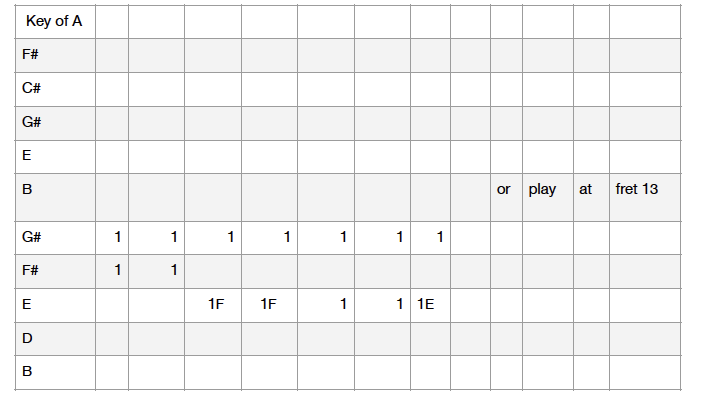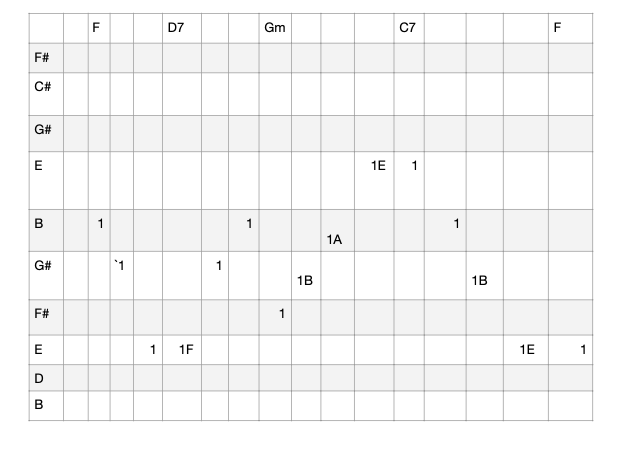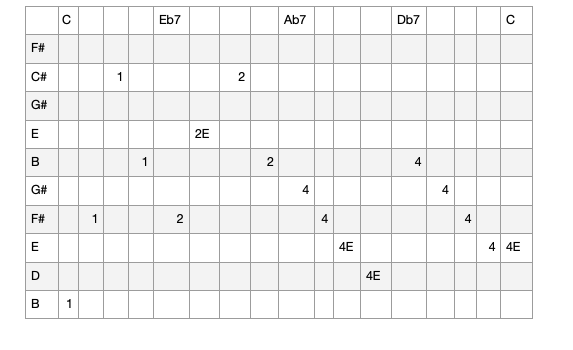
A turnaround is a short chord progression of two to four bars that can serve as an introduction, an ending, or an interlude between verses in a song. Tune your second string to C# for all these examples.
The first example, Turnaround I, is a Delta Blues sequence that I first heard on blues recordings by the great blues singer, Robert Johnson. It has been adopted by blues players everywhere and can still be heard in the music of modern players like ZZ Top and many Chicago Blues artists. It fits into almost any bluesy style tune and it might turn a few heads to hear a pedal steel player sport this cool sounding riff. The unique part of this line is the position it’s played in. We are playing over an A7 chord, but if you check the tab You will see that it’s played on the first or thirteenth fret in what you might think of as an F Major chord position. The root note that we are playing around is the A note on the sixth string, which allows the line to descend while keeping the steady A note.

Turnaround II is a true classic. Not only is it used in a multitude jazz tunes, but it serves as a the chord progression for dozens if not hundreds of pop and standard songs from the mid 20th Century. The shorthand is I-VI-II-V-I
The root chord is the I, in the case of this example it’s F. The VI chord is some form of a D chord, either minor or dominant. In this example it’s a D7. The II chord here is a G minor and the V chord is a C7. I’m presenting it in this form to show how it can all be played at one fret using your A and B pedals along with the E knee lever.

Turnaround III is in a jazz-fusion sounding style to illustrate a way to get some contemporary sounds into your playing.
It is a jazz variant on Turnaround II using flat V chord substitutions for the middle chords. I call this the West Coast Turnaround because I first heard it in Wes Montgomery’s West Coast Blues, but it appeared in several other jazz standards many years prior to that. You can find it in Miles Davis’ “Half Nelson” and Tad Damerons’ “Lady Bird” and, most famously for pedal steel players, Buddy Emmons’ arrangement of Willy Nelson’s “The Night Life”.

The arrangement for Turnaround IV is in more of a jazz swing style. The chords in the line are basically the same as Turnaround III but they sound quite different in this context.You can hear more of the West Coast Blues or Night Life melodies in the chords.

If you work some of these turnaround ideas into your accompaniment and insert them in a song where they sound like they fit, you can add interest to your playing without having to ask to rhythm players to change what they do.